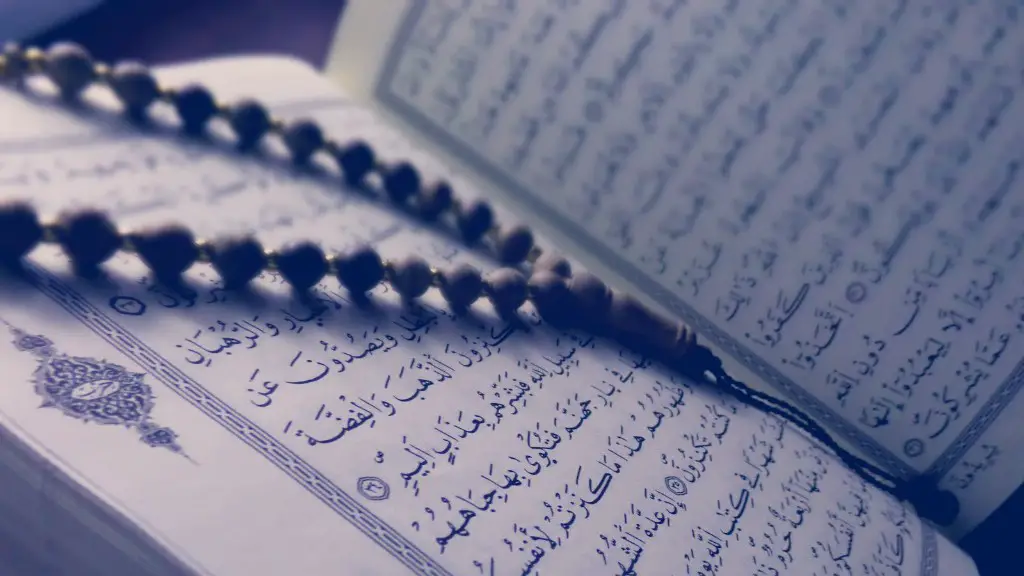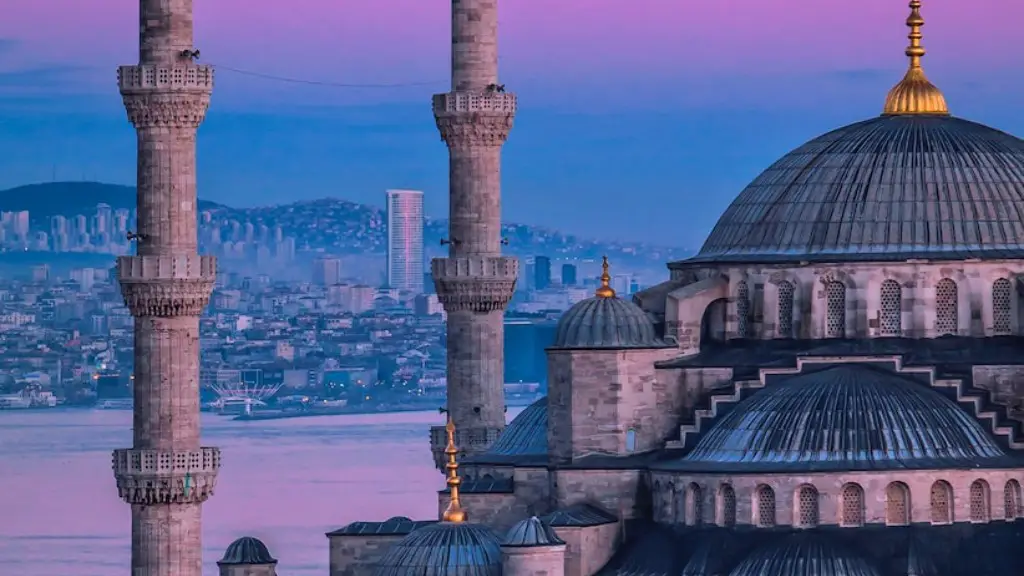Christianity is a religion that has been around for over 2000 years and it is one of the major faiths in the world today. It has its roots in events, beliefs and practices that date back to the time of Jesus Christ in the first century, during which it began to spread and develop, leading to the emergence of the large number of branches that exist today. One of those major branches is Orthodox Christianity. This religion, historically known to many as the Eastern Church or Eastern Orthodox Church, developed out of the Christian tradition that spread throughout the Eastern Mediterranean, North Africa and Middle East regions.
The history of the Orthodox Church begins with the earliest Christian communities. After the Resurrection of Jesus, Christianity first spread through the particular actions of all the Apostles who preached and taught the Gospel, and to a lesser extent through the combined efforts of their Disciple successors. Common beliefs and practices began to take form among these disparate groups, so that these smaller churches all shared a common liturgy and ecclesiastical structure of governance.
Under the leadership of the great Church Fathers, such as St. Ignatius of Antioch, St. Clement of Alexandria, and St. Polycarp, the Church began to develop and grow. The teachings of the Church Fathers were the foundation for the formation of the Nicene Creed and the Nicene Councils, the two major sources of authority and doctrine for the Orthodox Church. With the rise of numerous heresies, these writings were collected and affirmed as the basis of truth in the various dogmas of the Church. The eight Ecumenical Councils gathered by various Byzantine emperors during the fourth and fifth centuries helped to codify the teachings of the Christian Church and so established the basic tenets of Orthodox doctrine.
The emergence of the Orthodox Church was also intertwined with the rise of Eastern Christianity, which developed out of Eastern Roman Empire and its culture and political structure during the 4th and 5th centuries. This period marks the formation of the first Patriarchates, with Constantinople as the first among them. After the Great Schism of 1054, the Eastern Church began to develop independently from the Western Church, with the creation of the distinct canon laws and liturgies, as well as the formation of different religious and spiritual disciplines.
Today, Orthodoxy is the largest branch of Christianity, comprising more than 250 million people across Eurasia and Africa. Its importance to the spiritual, social, and cultural life of its members cannot be overstated. Its durable form of faith and practice has allowed it to survive over centuries of war, famine, conquest, and political upheaval. It continues to remain vital in the face of today’s contemporary challenges, such as consumerism and spiritual materialism.
Significant Figures and Events
Throughout its history, Orthodox Christianity has had a number of significant figures and events, some of which are still remembered and others of which have become part of its folklore. Among the most important of these was the Edict of Milan, signed in 313 CE by Roman Emperor Constantine and co-emperor Licinius. This edict declared the end of Christianity’s persecution in the Roman Empire and granted the Church freedom to practice its faith. Another notable occurrence was the Council of Chalcedon in 451 CE, which recognized the primacy of the Bishop of Constantinople, ensuring its continuing place of primacy among the Orthodox Churches.
A great number of saints were also integral to the development and growth of Orthodoxy, from the disciples and apostles to monastic saints, martyrs, mystics and theologians. Saints such as Saints Cyril and Methodius, Basil the Great, Gregory of Nyssa, John Chrysostom, and Ephraim the Syrian, who were influential theologians and formidable spiritual teachers, are deeply revered by the Orthodox today. Other important figures include Benedict of Nursia, who established the Benedictine Order; St. Anthony, who founded the monastic tradition; and Symeon the New Theologian, who revived mystical theology in the 11th century.
Theological and Doctrinal Distinctives
The major distinguishing elements of Orthodox Christianity are its theologies and doctrines. These include a strong emphasis on the Bible and the Tradition of the Church, as well as a deep reverence for the centuries-old icons and relics of the saints. The Orthodox Church also makes major distinctions between Eastern and Western thought, particularly with regards to the two natures of Christ; the double procession of the Holy Spirit from the Father and from the Son; as well as in its liturgies and practices such as the sign of the cross.
Other distinctive features include the veneration of icons, the seven Sacraments, the veneration of relics and other holy objects, the use of Eucharistic bread and the type of fish to be eaten on certain days, the maintaining of the three Hierarchical Ranks of bishops, priests, and deacons, and the observance of four major fasts during the liturgical year.
Spiritual and Holistic Practices
The Orthodox Church also has a vibrant spiritual life, which is expressed through its numerous spiritual practices and its holistic approach to health and well-being. These include the Sacraments, which are believed to bring spiritual healing and transformation. The Church also promotes and encourages prayer and meditation as important aspects of spiritual life, and practices such as fasting, almsgiving, and hospitality are also part of the spiritual path.
Charitable works, mercy and compassion towards the less fortunate, and the preservation of sacred places are also important spiritual activities in the Orthodox Christian tradition. Furthermore, by establishing a direct relationship between God and man, prayer and the Sacraments allow believers to deepen their spiritual communion and thus experience the mysterious, transformative power of faith in their daily lives.
Social Aspects and Outreach
The Orthodox Church also plays a major role in society as a whole. First and foremost, it maintains its spiritual authority over a large part of the world, particularly in the Eastern Orthodox countries. Through its numerous international churches, it also provides a rich source of education, charity and social services to thousands of people all over the world.
Additionally, the Orthodox Church takes a very public stance on social and political issues, in many cases advocating for social justice and the protection of human rights, as well as for peace and understanding between different nations and cultures. This dedication to protecting the vulnerable and helping the downtrodden is also manifest in the Church’s advocacy of the vulnerable members of society, such as refugee and asylum seekers, the homeless and those suffering from poverty.
Cultural Contributions
The Orthodox Church has also made numerous contributions to culture and the arts, including religious art, architecture, music, and literature. A major example is the architecture of many churches, which was inspired by the culture of the particular region, such as the Hagia Sophia in Istanbul. Music is also a major component of Orthodox culture, with chants and hymns being a key part of the spiritual life of the faith.
In addition, the Church has produced many works of literature, ranging from the works of early Church Fathers to modern religious literature, such as the Iliad by Homer and the Bible. Finally, the Orthodox Church has also been an important influence on the visual arts, with religious paintings and icons being a major part of its artistic heritage.
International Impact
In today’s globalized world, the Orthodox Church is playing an increasingly major role in international religious affairs. It was instrumental in brokering a peace between Bosnia and Serbia in 1995, and is also a major force in promoting interfaith dialogue, particularly between Christianity and Judaism.
The Orthodox Church is also deeply involved in international education and missionary activities, focusing on countries such as India and Nigeria, where it is working to ensure the viability of church life. Moreover, through its educational centers, the Church seeks to support and foster a deep understanding of the Orthodox faith among its youth.
Conclusion
As one of the oldest religious traditions in the world, the Orthodox Church has had a long and colourful history, and its impact on its members and society at large has been immense. By examining its origins, significant figures and events, theological and doctrinal distinctives, spiritual and holistic practices, social aspects, cultural contributions and its international impact, it is possible to gain a greater appreciation of the Orthodox Church and the role it plays in the world today.

